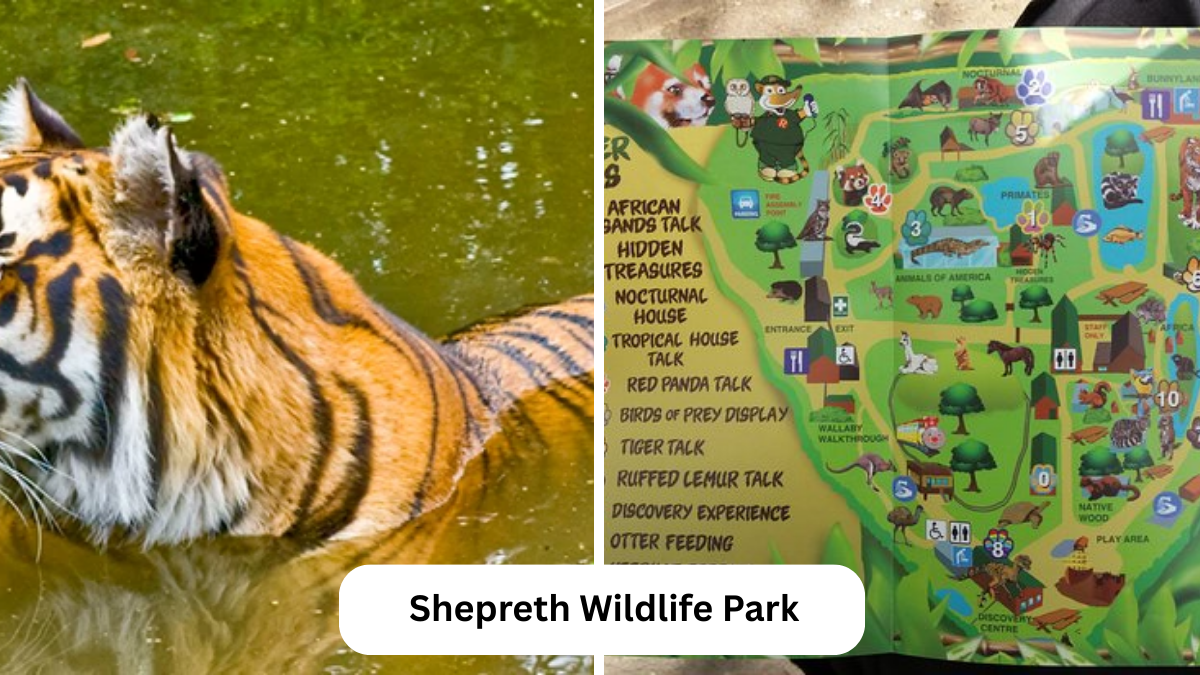Introduction
Shepreth Wildlife Park is a beloved destination in Cambridgeshire, England, where nature, wildlife, and education come together in harmony. Over the years, it has grown into more than just a zoo; it has become a sanctuary of conservation, a hub of learning, and a family-friendly attraction that inspires curiosity about the natural world. For visitors, Shepreth Wildlife Park is a chance to connect with animals from around the globe, discover rare species, and understand the importance of protecting biodiversity for future generations.
This article explores the history, mission, and experiences offered at Shepreth Wildlife Park, while also highlighting its role in conservation and community engagement.
The History of Shepreth Wildlife Park
The story of Shepreth Wildlife Park dates back to the 1970s, when the site was originally used as a sanctuary for injured wildlife. It began with a focus on rehabilitation, caring for hedgehogs, birds, and other native species that needed help before returning to the wild. Over time, the mission expanded to include education, research, and the conservation of exotic species as well.
By the 1980s, Shepreth Wildlife Park opened its doors to the public, offering visitors the chance to explore its grounds, meet animals up close, and learn about the natural world. What began as a small wildlife rescue effort soon evolved into a respected zoological park that today attracts thousands of visitors each year.
Shepreth Wildlife Park as a Conservation Centre
At the heart of Shepreth Wildlife Park lies its commitment to conservation. Unlike traditional zoos that once focused primarily on entertainment, this park emphasizes the role of education and global responsibility. Animals housed at Shepreth Wildlife Park are part of breeding programs, research initiatives, and awareness campaigns aimed at protecting endangered species.
The park collaborates with various organizations to safeguard animals like red pandas, lemurs, and tigers. At the same time, it continues to support native wildlife rescue efforts, reflecting its origins. This dual role—caring for both exotic and local species—sets Shepreth Wildlife Park apart and makes it a vital part of the conservation network in the United Kingdom.
A Family-Friendly Experience
For families, Shepreth Wildlife Park offers much more than just a walk among enclosures. The park is designed to engage visitors of all ages, providing interactive learning opportunities, themed exhibits, and hands-on activities. Children can explore playgrounds, participate in educational talks, or take part in animal encounters that spark lifelong curiosity about the natural world.
The variety of animals—from meerkats and owls to reptiles and big cats—ensures that every visit feels fresh and exciting. The park is not just about observing animals but also about creating meaningful connections between people and wildlife.
Education at Shepreth Wildlife Park
Education is one of the pillars of Shepreth Wildlife Park’s mission. Schools and community groups often visit to take part in tailored educational sessions. These programs emphasize biology, ecology, and conservation, encouraging students to think critically about the relationship between humans and the environment.
Through workshops, guided tours, and interactive exhibits, the park introduces young learners to topics such as endangered species, habitats, and the importance of biodiversity. Teachers often note how the park provides a real-world learning experience that complements classroom education.
Shepreth Wildlife Park and Endangered Species
One of the standout features of Shepreth Wildlife Park is its involvement in the conservation of endangered species. Animals like the red panda, a visitor favorite, are part of global breeding and awareness programs. The park’s dedication to these initiatives highlights its role in addressing the biodiversity crisis that the world faces today.
In addition to exotic animals, Shepreth Wildlife Park also continues to help local wildlife through its rescue center. Injured hedgehogs, birds of prey, and other species are rehabilitated with the goal of releasing them back into the wild whenever possible. This combination of local and global conservation makes the park’s work particularly impactful.
The Visitor Experience
When stepping into Shepreth Wildlife Park, visitors are welcomed by lush greenery, thoughtfully designed enclosures, and an atmosphere that prioritizes both animal welfare and guest experience. Every path leads to a discovery, whether it’s watching playful otters, listening to the call of exotic birds, or observing the quiet grace of big cats.
Daily talks and feeding sessions allow guests to learn directly from the keepers, who share insights into animal behavior, diets, and conservation needs. These experiences make the visit not only entertaining but also enriching, leaving guests with knowledge and appreciation they carry beyond the park’s gates.
Shepreth Wildlife Park and Community Engagement
Beyond being a tourist attraction, Shepreth Wildlife Park is deeply connected to its local community. It regularly hosts events, workshops, and fundraising activities that support conservation projects both within the park and abroad. Local residents often see the park as a valuable cultural and educational resource.
Through charity work, awareness campaigns, and active participation in conservation efforts, the park demonstrates that its mission extends far beyond its boundaries. This community-driven approach strengthens its identity as a place where people and wildlife coexist in harmony.
Sustainable Practices at Shepreth Wildlife Park
Modern wildlife parks face increasing responsibility to operate sustainably, and Shepreth Wildlife Park is no exception. The park has implemented eco-friendly practices to reduce its carbon footprint, such as recycling initiatives, energy-efficient infrastructure, and sustainable sourcing of animal feed.
By modeling responsible practices, Shepreth Wildlife Park educates visitors about the importance of sustainability and inspires them to adopt eco-friendly habits in their own lives. This commitment ensures that the park not only protects wildlife but also contributes to the preservation of the planet as a whole.
Why Shepreth Wildlife Park Stands Out
There are many zoos and wildlife parks across the UK, but Shepreth Wildlife Park stands out for its unique combination of conservation, education, and family-friendly experiences. It is not overly commercialized, which allows it to maintain a sense of authenticity and closeness to nature. Visitors often describe the atmosphere as warm, welcoming, and deeply inspiring.
The park’s dedication to balancing entertainment with a strong conservation message ensures that every visit is both enjoyable and meaningful. This balance has earned it a reputation as one of the most respected small wildlife parks in the country.
Looking Toward the Future of Shepreth Wildlife Park
As Shepreth Wildlife Park looks to the future, its mission remains clear: to protect animals, educate the public, and promote sustainability. With climate change and habitat loss threatening species worldwide, the work done by places like Shepreth is more important than ever.
Future plans may include expanding facilities, creating new exhibits, and deepening international partnerships for conservation. At the same time, the park continues to strengthen its role as a community hub, ensuring that visitors return not only for the animals but also for the sense of purpose and connection the park inspires.
Conclusion
Shepreth Wildlife Park is more than just a place to see animals—it is a sanctuary where conservation, education, and community come together. From its humble beginnings as a rescue center to its current role as a respected wildlife park, it has remained true to its mission of protecting animals and inspiring people.
For families, students, and wildlife enthusiasts, a visit to Shepreth Wildlife Park is a journey of discovery that leaves lasting memories. More importantly, it is an opportunity to reflect on the shared responsibility humans have in protecting the natural world. Through its dedication and vision, Shepreth Wildlife Park continues to be a shining example of how local initiatives can have a global impact.
FAQs
Where is Shepreth Wildlife Park located?
Shepreth Wildlife Park is located in Cambridgeshire, England, making it accessible to both local residents and visitors from across the UK.
What types of animals can be seen at Shepreth Wildlife Park?
Visitors can encounter a wide variety of species, including red pandas, lemurs, otters, meerkats, owls, reptiles, and even big cats
Does Shepreth Wildlife Park focus on conservation?
Yes, the park is deeply involved in conservation efforts, participating in breeding programs for endangered species and running a rescue center for native wildlife.
Is Shepreth Wildlife Park suitable for children?
Absolutely. The park offers educational programs, playgrounds, animal encounters, and interactive exhibits that make it ideal for children and families.
Can schools and groups visit Shepreth Wildlife Park?
Yes, the park regularly hosts school trips and community groups, offering tailored educational sessions that complement classroom learning.




